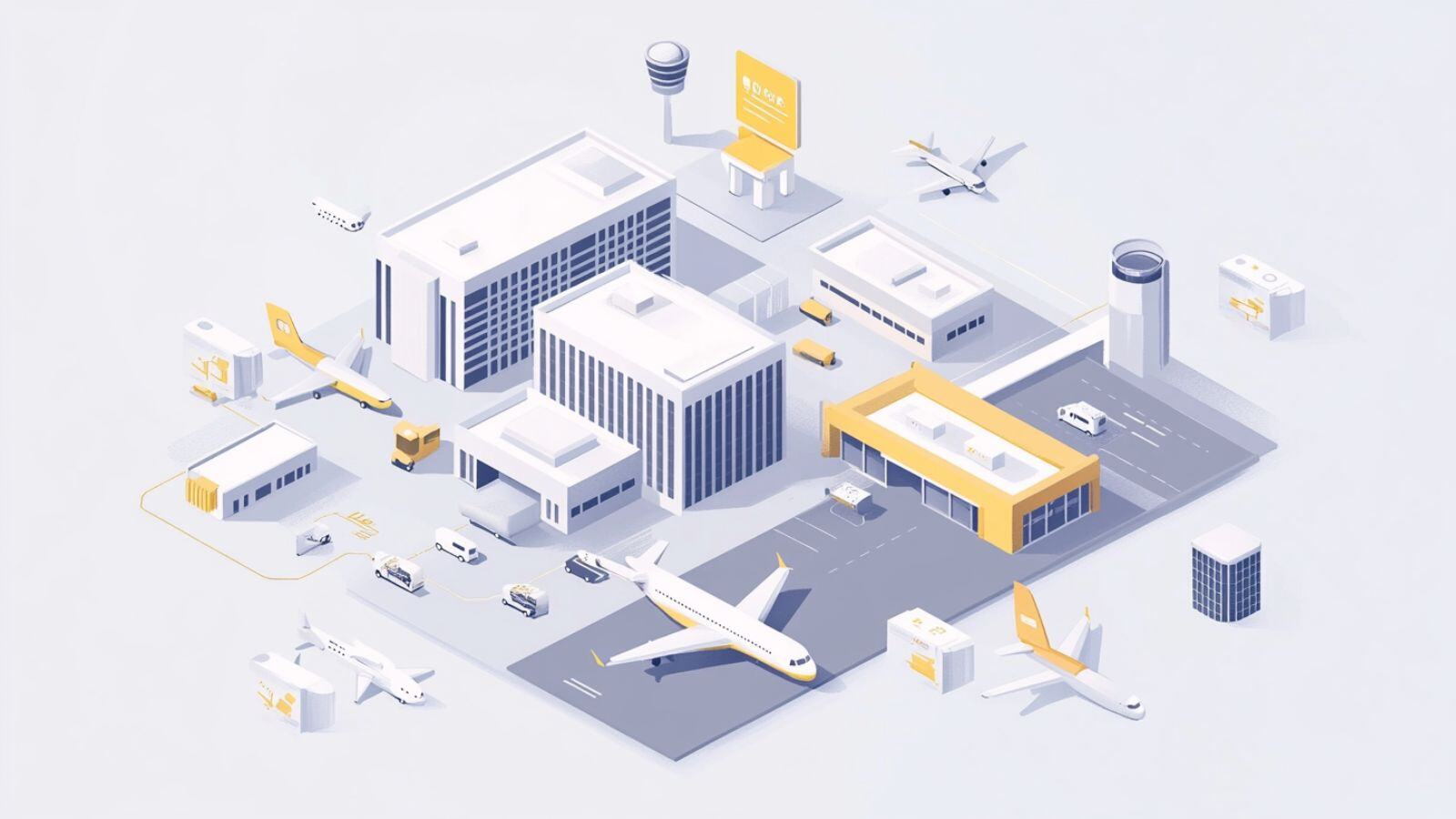With more choice available for passengers today than ever before, airports are constantly seeking ways to improve efficiency, enhance passenger experience, and increase revenue. With daily changes to airline schedules, new routes being added and, in some cases, removed, staying on top of what’s happening requires the best data sets available.
Airport growth and latest challenges
Airports are experiencing rapid growth driven by rising global travel demand, and global air passenger traffic is expected to grow at a compound growth rate (CGR) of 4.3% between now and 2042. But with this growth brings a new set of technology-focused challenges.
One of the key challenges is modernizing outdated IT infrastructure to support the increasing use of digital services, from advanced biometric security systems to self-service check-ins. As airports aim to become more data-driven, they must integrate diverse systems, such as baggage handling, air traffic control, and passenger management, to enable seamless communication and real-time decision-making. The rise of smart airports also necessitates strong cybersecurity measures, as the digitalization of airport operations increases vulnerability to cyberattacks.
Furthermore, scaling up the use of Internet of Things (IoT) devices, AI-powered predictive analytics, and automation requires significant investment in advanced technologies, while ensuring these systems can handle the vast amounts of data being generated. Airports must navigate these technological challenges to remain competitive and deliver a seamless, efficient experience to passengers.

Types of Airports
From the very largest airports and Megahubs such as Dubai, London Heathrow and Singapore to some of the smallest yet fiercely competitive regional airports around the world, accurate data is crucial to business planning and development. A simple fifteen-minute change of schedule, the loss of a connecting flow or a capacity downgrade can see airports lose revenue overnight and go from profit to loss.
The Role of Data Analytics at Airports
Airports around the world use a combination of data insights to inform their decisions, plan their futures, identify areas of growth and innovation, and focus their efforts where the maximum return can be achieved. Analytical databases form the foundations of successful airport operations and can be used in numerous ways to provide real advantages over competitors and understand the needs of existing and future customers. In particular, data analytics can:
- Identify Traffic Flows: From early morning check-in and security requirements through to the opening hours of concessions and the resourcing of control facilities, understanding the peak hours of an airport both aids resourcing and can de-stress the passenger experience, resulting in increased retail spend.
- Provide Passenger Insight: Schedules data provides detailed insights on the final destinations of travellers, which can inform tax-free retail offerings, as can the reason for travel; early morning departures to sun spots sell sunglasses to holidaymakers, while services to China offer tremendous opportunity for the sale of high value gifts.
- Maximise Resources: Operational resources can be optimized through understanding the mix of aircraft types arriving and the type of passengers onboard – in particular those connecting to another destination.
- Identify New Opportunities: New market opportunities can be identified. Airports should always be looking at those travellers flying indirectly to their final destination and why. Is there no direct flight or are the current flights poorly scheduled? Are they full and more capacity is required? Or are fares too high, encouraging use of alternate airports? Airport data analytics answer these questions and more, preventing embarrassing questions from shareholders, stakeholders and senior management.
Data Challenges at Airports
As airport data becomes increasingly complex, the challenges this poses are also growing. Most airport commercial teams know their passengers and their airline customers very well, but even that knowledge needs to be supported by the best available data.
Airports, to remain competitive, require the support of reliable data partners who can adeptly navigate this swiftly evolving terrain. It’s crucial that they have immediate access to comprehensive, up-to-date data facilitated by experts with extensive experience and specialized knowledge.
OAG’s suite of cloud-based data products and services provides a range of delivery methods that allow all commercial areas of an airport easy access to the latest data and insights. When embedded into an airport’s management information systems it provides a common platform of knowledge for all. Data can be refreshed on a daily basis for the most powerful of airport users or with less frequency for those airports of smaller scale.
OAG has been leading innovation in aviation data for decades. More than 300 airports trust OAG with their data because it delivers value to the industry, invests for the future and enables transformation for its customers. Speak to a specialist and find out how we can help evolve your airport's data analysis.
HOW OUR CUSTOMERS USE OAG DATA:

INCHEON AIRPORT
Incheon Airport relies on OAG's analytics platform to track its performance and monitor connectivity for travelers.

MACAU AIRPORT
Macau International Airport uses OAG’s analytics platform to identify commercial opportunities across the South East Asian travel market.

ADELAIDE AIRPORT
Adelaide Airport utilized OAG’s Traffic Analyser to secure their much sought after direct China service.


